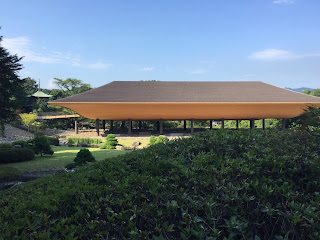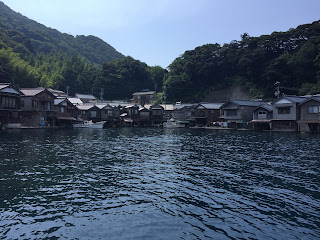The Temple is off the beaten path; yet I met a young woman somewhere from the west, a handsome backpacker whose backpack was as a serious backpacker huge. But she found the place and saw all.
This was my second time; the first time I saw Fujimori's architecture and all the premises. This time, in addition to wondering around the whole grounds, I went into the Hakuin Room gallery and Kotei installation. These two were new, from last year (2016).
This is a perfect site where you can get in touch with Zen, Japanese gardens, old and new-style architecture, and artwork of water and light. All in one.
http://shinshoji.com/english/
https://www.urdesignmag.com/architecture/2017/07/11/kohtei-sandwich-kohei-nawa-fukuyama/





































